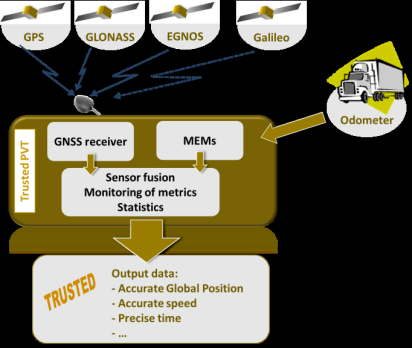More information
Main author
Favere, S.
Co-Authors
Schmidt-Cotta, R.-R.
Type of media
Publication type
Lecture
Publication year
2013
Publisher
22. EVU Conference, Florence
Citation
Favere, S.: TACOT Project, toward a Trusted GNSS function

The need for robust and trustable GNSS information is constantly growing since many years and far beyond traditional safety of life domains. Today, if few technical solutions can actually cover this need, they are too complex or too costly for most applications.
TACOT is offering an innovative technical alternative which is able to provide a good confidence and robusteness in Position, Velocity and Time (PVT) at low cost. The proposed solution (Trusted PVT function) relies mainly on the merge and the consistence of several sources of information to provide a high confidence level. This new concept notably relies on Bayesian technic and is particularly difficult to fool.
This solution also takes advantage of GNSS multi-constellations and EGNOS to increase the quality of its outputs. As such, it also prepares markets for Galileo introduction.
The approach of TACOT is to demonstate the assets of this innovation by improving Digital Tachographs (then called Augmented Digital Tachograph or ADT) in the frame of anticipating an envisaged amendement of the EC Regulation 3821/85. The expected improvement is thus first to provide a second motion information and second a GNSS position for the start/end of the travels in a trusted and secured manner to the ADT. TACOT is then able to support the use of trusted PVT data by any third party ITS application, through the definition and implementation of an external API in the ADT, and making these data available on the CAN bus.
To fully demonstrate the TACOT’s achievements, the prototypes developed in the project will transmit their data to a commercial Fleet Management System (FMS). This demonstration will notably highlight the GNSS improvements (accuracy, availability…), the plus in confidence with regard to potential threats and weaknesses of GNSS, and the data used by the ADT and the FMS.